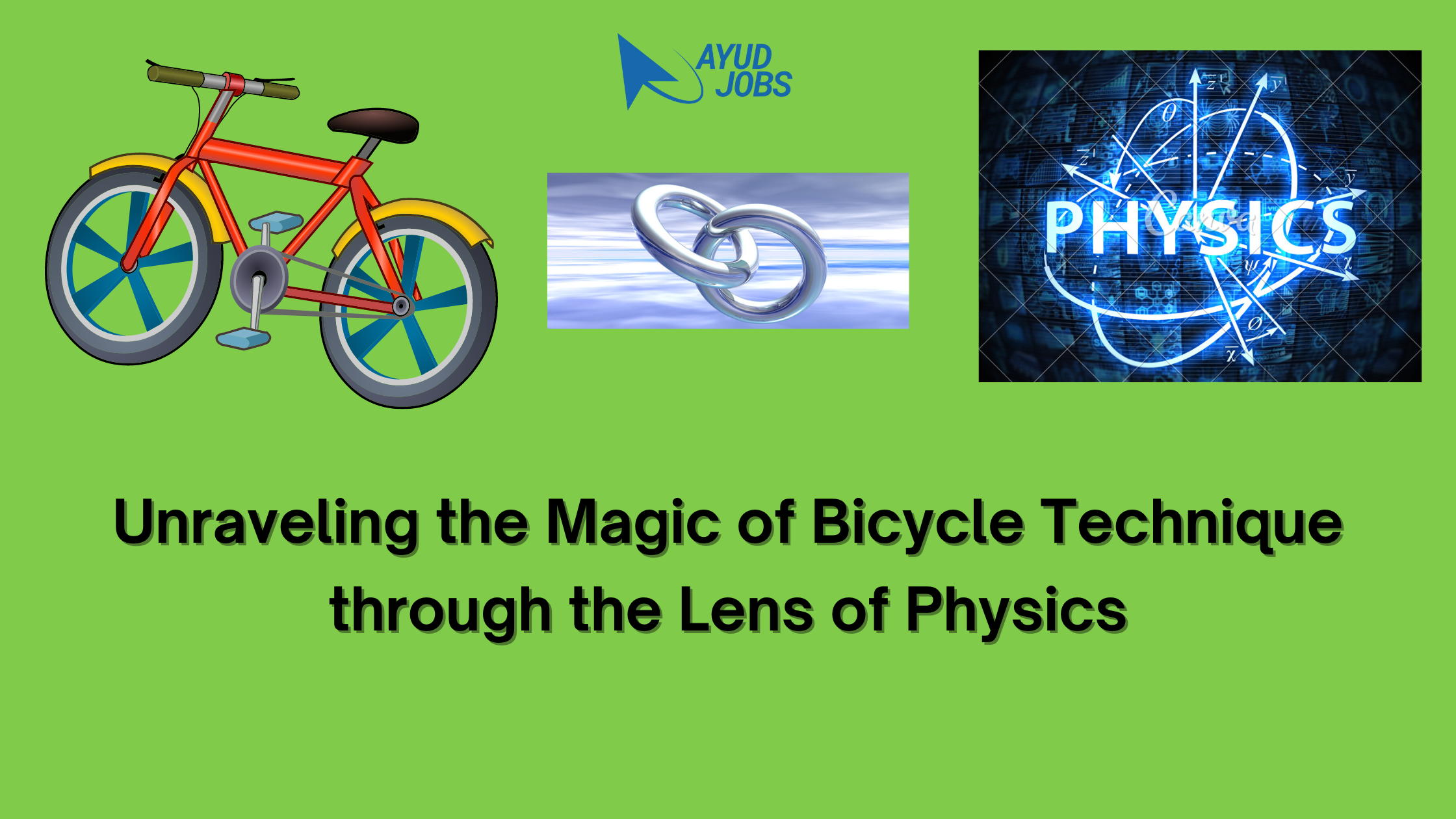Unraveling the Magic of Bicycle Technique through the Lens of Physics
Introduction
Bicycles have long been considered one of the most efficient and sustainable modes of transportation. They are not only eco-friendly but also provide numerous health benefits to riders. Beyond their practicality, the design and technique behind bicycles are deeply intertwined with the principles of physics. Bicycle technique Physics and cycling. In this blog, we will explore the fascinating relationship between bicycle technique and the laws of physics, shedding light on the mechanics that keep cyclists pedaling forward effortlessly.
The Balancing Act: Centripetal and Centrifugal Forces
One of the most impressive aspects of cycling is the ability to maintain balance while moving forward. The fundamental principle of physics that comes into play here is centripetal force. When a bicycle turns, the tires exert centripetal force towards the center of the turn, allowing the bike to maintain a curved trajectory.
To keep from toppling over during a turn, a cyclist must counteract this force by leaning their body and bike at just the right angle. This counteracting force is provided by the centrifugal force acting in the opposite direction. Understanding the balance between these two forces is crucial for cyclists to navigate turns safely and smoothly.
Pedaling Power: Torque and Angular Momentum
The primary source of forward motion in a bicycle comes from the rider’s pedaling action. The application of force on the pedals generates torque, a rotational force. Torque is then transferred through the chain and gears to the rear wheel, propelling the bicycle forward.
The principle of angular momentum is essential to maintain stability and efficiency during pedaling. As the pedals turn, the angular momentum keeps the wheels rotating consistently, allowing the cyclist to maintain their speed. This principle also explains why cyclists maintain their balance more easily while in motion compared to when stationary.
Air Resistance: Drag and Streamlining
Air resistance, also known as drag, is a significant factor that opposes the forward motion of a bicycle. When cycling at higher speeds, air resistance becomes more prominent, requiring the cyclist to exert more force to overcome it.
Physics teaches us that air resistance can be reduced through streamlining. Cyclists often adopt a crouched position to minimize their frontal area, thus reducing drag and allowing them to achieve higher speeds with less effort. This technique is commonly observed in professional cyclists during time trials or high-speed descents.
Braking and Friction
Braking is a vital aspect of cycling, as it ensures the rider’s safety by controlling speed and stopping the bicycle when needed. Physics plays a crucial role in understanding the principles behind braking. Bicycle technique Physics and cycling.
The primary force at work during braking is friction. When the cyclist applies the brakes, brake pads create friction against the wheels, converting the kinetic energy of the moving bicycle into heat. The larger the frictional force, the quicker the bicycle decelerates. Understanding the relationship between friction and braking distance is vital for cyclists to react appropriately in different road conditions.
Conclusion
The art of cycling is much more than just pushing pedals and moving forward. It is a perfect example of how fundamental principles of physics govern the mechanics of an everyday activity. From the delicate balance that keeps a cyclist upright during turns to the efficient use of angular momentum for steady pedaling, the intricate interplay between bicycle technique and physics is a testament to the wonders of science in our daily lives.
As we continue to explore the connections between physics and cycling, we gain a deeper appreciation for the marvels of the natural world and the innovations that have made bicycles such a remarkable invention. Bicycle technique Physics and cycling. So, the next time you hop on a bicycle and feel the wind against your face, take a moment to reflect on the fascinating physics at work behind every pedal stroke and turn of the wheel.
Join our what’s app channel for timely updates
Click here to install Ayud Jobs App from Playstore
Mastering Knowledge with GoTestIt: The Ultimate Self Evaluation Tool

Click here to install Ayud Jobs from Play Store.
#ayudjobs #ayudsoftware #BicycleTechnique #PhysicsandCycling #BikePhysics #CyclingMechanics #BalancingAct #TorqueandMomentum #AirResistance #Streamlining #BrakingTechniques #CyclingEfficiency #BikeDynamics #PedalingPower #PhysicsInSports #ScienceofCycling #CyclingScience #ayud #ayudjobs #askayud #MultiLanguageSupport #ResumeBuilder #gotestit #ayudian







